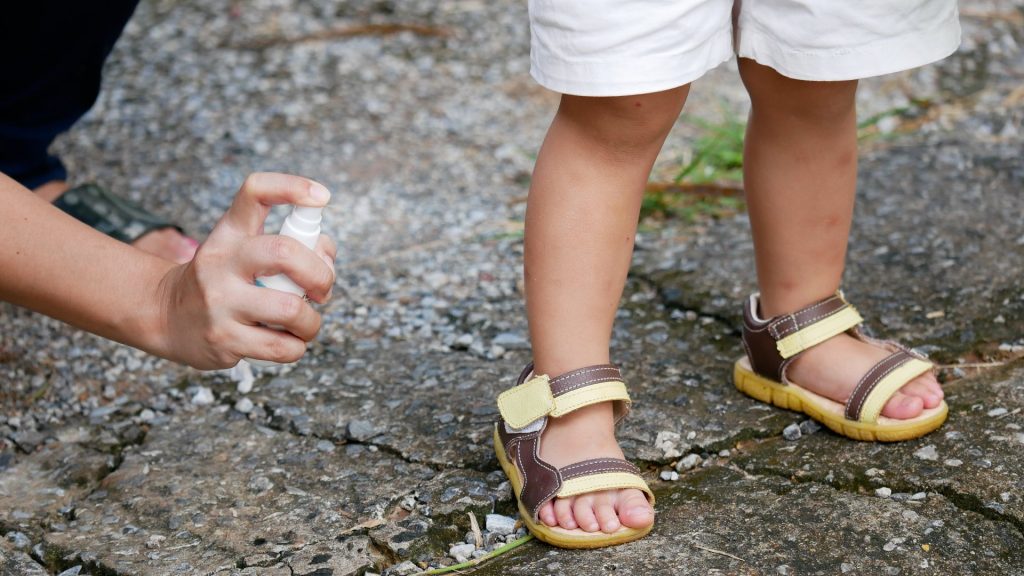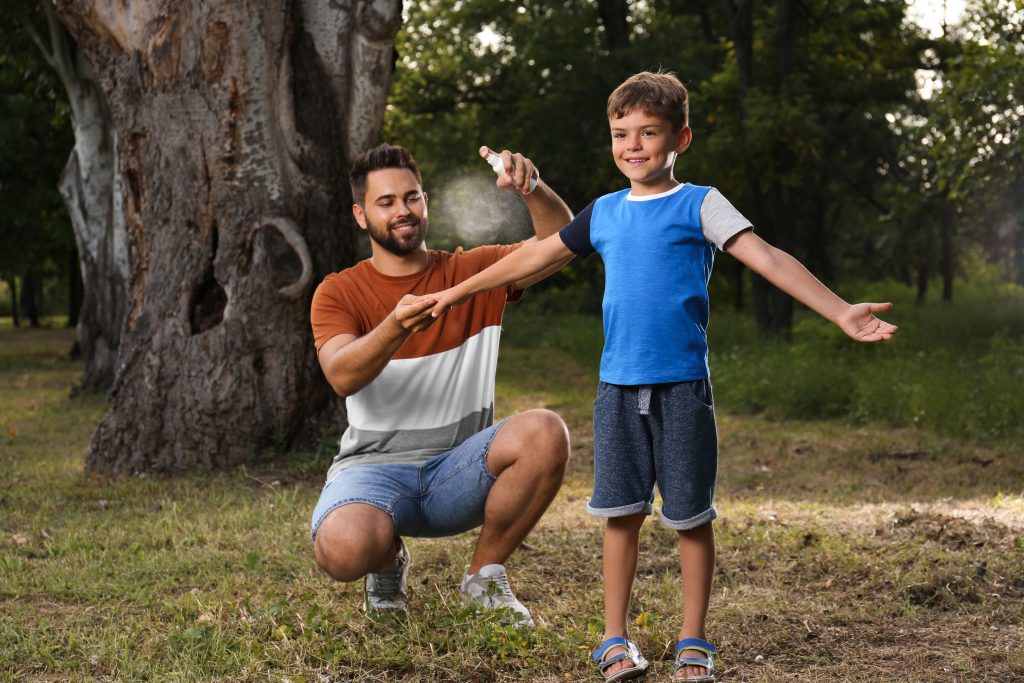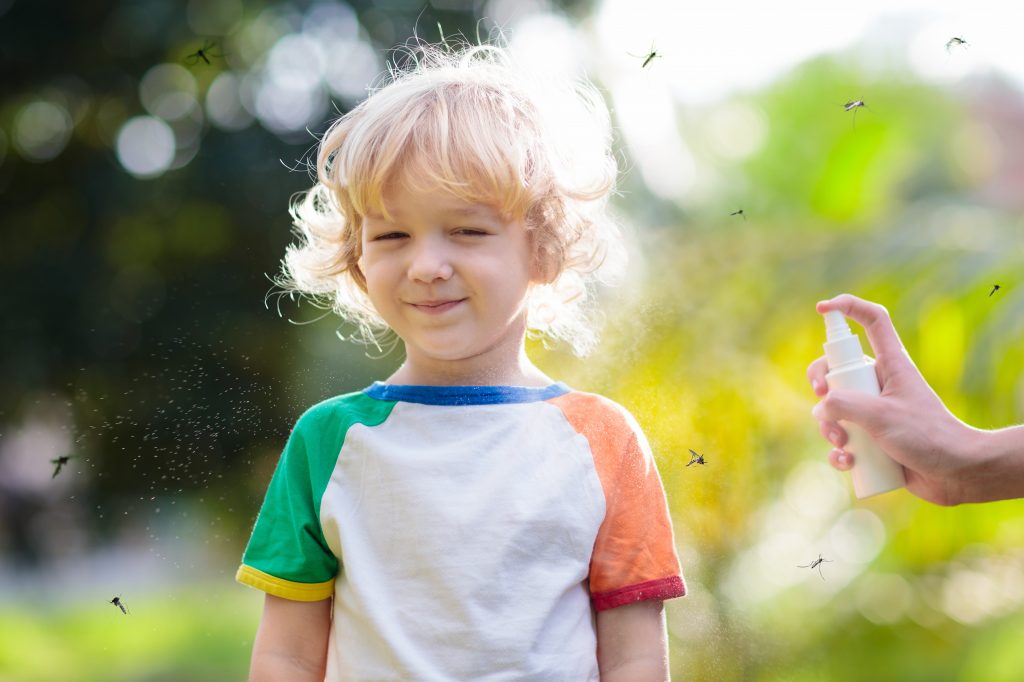Ingredients Matter
People use repellents to protect themselves from insect borne diseases like Lyme Disease and make themselves less desirable to bugs like mosquitos or ticks. Unfortunately, we don’t always know what it is we’re putting on our skin when we choose a bug spray or lotion. Insect repellents are regulated like pesticides which means that only active ingredients need to be disclosed on the packaging. All other inert ingredients do not have to be listed. This can create a significant challenge for parents as we work to make healthy decisions for our families.
Luckily, there are organizations like MADE SAFE. Products carrying the MADE SAFE seal ensure that no known or suspected toxic ingredients are used in their production, giving shoppers comfort that products do not contain ingredients that are known to be unsafe for use on their bodies, with their families, and in their homes.
For bug repellents, MADE SAFE recommends choosing products where 100% of the ingredients are disclosed. You can then check those ingredients on the MADE SAFE Banned and Restricted List, a list of over 6500 toxic substances compiled from authoritative sources from around the world.

Bug Sprays
There are two key ingredients to watch for in bug sprays: DEET and pyrethroids.
DEET
DEET is often one of the most recognized ingredients in strong bug sprays. While DEET is one of the most effective bug repellents and recommended by the CDC for ticks, there are some cautions to think about before using bug repellents with DEET in them.
Large doses of DEET have been linked to skin blisters, seizures, memory loss, headaches, and skin irritation.
DEET has been linked to neurotoxicity. It’s been found to inhibit cholinesterase, an important neurotransmitter.
DEET has an ability to cross the placenta. In animal studies, DEET was found in the fetus and in newborns after exposing the mother to the chemical.
DEET is absorbed quickly through this skin. One study showed that 48% of the applied dose of DEET is absorbed within six hours. When you mix DEET with some sunscreen chemicals, it’s absorbed even more quickly.
Pyrethroids
Another common class of active ingredients in bug repellents is called pyrethroids, which are synthetic pesticides. Many pyrethroids are lipophilic, which means they stick to the fat cells in our body. Many pyrethroids can easily cross the blood-brain-barrier and become toxic to our central nervous system.
One of the most common pyrethroids is called permethrin. Permethrin is used to repel both mosquitoes and ticks. It’s most commonly used to treat bug resistant clothing, things like outdoor gear and mosquito netting, but it is also commonly used in sprays and is one of the most commonly used worldwide pesticides for crops.
Other Ingredients to Watch For
In addition to the actual bug repellents in the sprays, there are many other ingredients in bug sprays, things like solvents, preservatives, and fragrances. When choosing a bug spray, it’s important to consider the toxicity of those substances when you can.

Safer Alternatives
There are lots of effective tips for avoiding bites for mosquitoes that do not require bug spray:
- choose long pants and sleeves (especially made of thick fabrics).
- use mosquito netting when possible.
- stay indoors around dawn and dusk because that is when mosquitoes are out most.
- use a fan because mosquitoes have a hard time landing in the wind (extra tip: use a tabletop fan but place it on the ground because many mosquito species hangout near the ground – one reason for all the bites on your legs!).
There are also a number of ways to choose a safer bug spray than those that contain DEET or pyrethroids. Here are a few you can try this summer.

Essential Oils
When it comes to an essential oil-based repellent – or really any repellent – it’s important to know your area and know your family. Know where you are and what you’re at risk from like Zika, malaria, dengue fever, Lyme or just very pesky, irritating bug bites.
Essential oils are incredibly potent, so they must be diluted properly. For that reason, MADE SAFE recommends either buying premixed bug spray that contains essential oils or doing a lot of research before you DIY. With a premixed bug solution, you have the peace of mind that it has been properly diluted.
When looking for an essential oil based option, here are three that repel bugs like mosquitos.
Clove
One essential oil that was found to be effective against mosquitos is clove. It was most effective when mixed with other oils like geranium and thyme. When mixed with those two specifically, the mixture protected against mosquito bites for two and a half hours.
Lemongrass
Another essential oil option to consider is lemongrass. One study found that lemongrass oil was 74% and 95% effective against two different mosquito species for two and a half hours.
Thyme
The third essential option to consider is thyme. Thyme has been found to be one the most effective mosquito repelling essential oils along with clove. One study found it to provide 1.5 to 2.5 hours of protection against repelling malaria and yellow fever vectors. Clove was effective for about 60 minutes.
Oil of Lemon Eucalyptus
Another option for an alternative to DEET and pyrethroids is oil of lemon eucalyptus. While it sounds like an essential oil, it’s really not. Oil of lemon eucalyptus can be naturally derived but it’s most often synthetically produced. When it’s synthetic, oil of lemon eucalyptus is often called PMD and is a safer synthetic than DEET and is highly effective. The CDC endorses the use of oil of lemon eucalyptus as an effective bug repellent for mosquitoes and for ticks.

What To Do
Read the labels to know the ingredients. If you are reading a label and you notice that not all of the ingredients are disclosed, consider choosing another option.
Skip DEET and permethrin where you can. If you are looking for a natural option, consider clove, lemongrass, thyme or naturally extracted oil of lemon eucalyptus. If you’re considering a safer synthetic, you could consider the synthetic version of oil of lemon eucalyptus (PMD).
Try alternatives like using a fan and wearing the right clothing.
Make sure that you choose an age-appropriate bug solution. Not every bug spray active is right for a child of every age. Read the manufacturer guidelines on the back of the packaging to find an age appropriate option for your child.
Check out madesafe.org for certified products including bug sprays, and tons of non-toxic living guides.

Want to learn more about how to select safer bug repellents this summer? Check out The LDA Podcast, Episode 35 (below) as Tracy and Sydney go more in depth with what to know about keeping the bugs at bay this summer!
Special Thanks to Sydney Cook and MADE SAFE
Sydney has been the MADE SAFE for over six years as a Director of Science and Research, she manages MADE SAFE screening by working with our team of ingredient researchers and MADE SAFE’s advisory board of area-specific experts. Sydney also researches all aspects of ingredients and materials, including human and environmental toxicity, manufacturing process, and contamination risks.
You can learn more about MADE SAFE and their work at madesafe.org.


